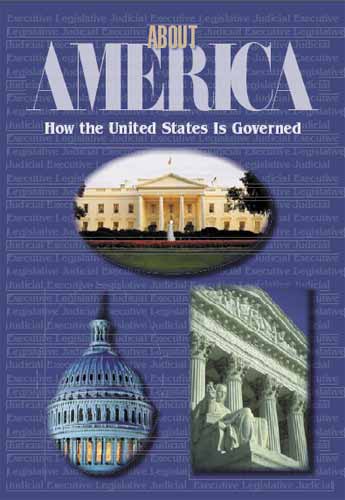- You are in:
- Home >
- Publications
About America: How the U.S. is Governed

October 2005
This joint publication of the State Department's Bureau of International Information Programs and Braddock Communications presents a comprehensive yet easy-to-read overview of the various levels of and institutions related to government in the U.S. "How the United States Is Governed" describes how federal, state, and local governments are elected, how they operate, and how the executive, legislative, and judicial branches of government relate under the U.S. constitutional system. It also highlights how nongovernmental organizations (NGOs) and other institutions allow Americans to influence and shape government policy. This publication contains a glossary and a list of useful Web sites.
Inside This Publication
Chapters
- Overview of National, State, and Local Governments in the United States
- Similarities, Differences Between the U.S. and Other Major Democracies
- The Federal Government
- State Governments
- Local Government
- Elections and the Electoral Process
- Nongovernmental Organizations and Institutions that Influence Public Policy
- Funding Government in the United States
Video
Related Article
-

Brown v. Board of Education
The U.S. Supreme Court’s landmark 1954 Brown v. Board of Education decision declared unconstitutional the legal segregation of public schools by race. The decision thus extended federal power to education. It also signaled a new determination to interpret more broadly the Constitution’s promise of equality before the law and began an era of active federal intervention to defend and guarantee the civil rights of all Americans.
Related Photo Gallery
-

The Executive Branch at Work
Activities of the United States’ executive branch, charged with implementing and enforcing the law of the land, involve a broad range of skills by a diverse group of people executed in a wide variety of venues. See a few of the ways the executive branch works.
Related Publication
-

Outline of U.S. Government
What makes U.S. government uniquely American ... its Constitution, the separation of powers, the concept of “checks and balances,” the decentralized roles of state and local governments, and a citizenry with wide opportunity to be part of it all.
On the Record
 A policy of self-determination for American Indians is one of the most positive aspects of the U.S. experience, and may potentially serve as a model for better relations between other countries and indigenous peoples and populations.
A policy of self-determination for American Indians is one of the most positive aspects of the U.S. experience, and may potentially serve as a model for better relations between other countries and indigenous peoples and populations.
- Home
- Foreign Policy
- U.S. Politics
- American Life
- Democracy
- Science & Health
- World Regions
- Multimedia
- Publications
This site delivers information about current U.S. foreign policy and about American life and culture. It is produced by the U.S. Department of State's Bureau of International Information Programs. Links to other Internet sites should not be construed as an endorsement of the views contained therein.
- Services:
- Subscribe
- RSS Feeds
- Mobile
- Weekly Newsletter
- Multimedia:
- Webchats
- Blogs
- Photo Gallery
- Podcasts
- Video
- Publications:
- eJournal USA
- Books
- Student Corner


